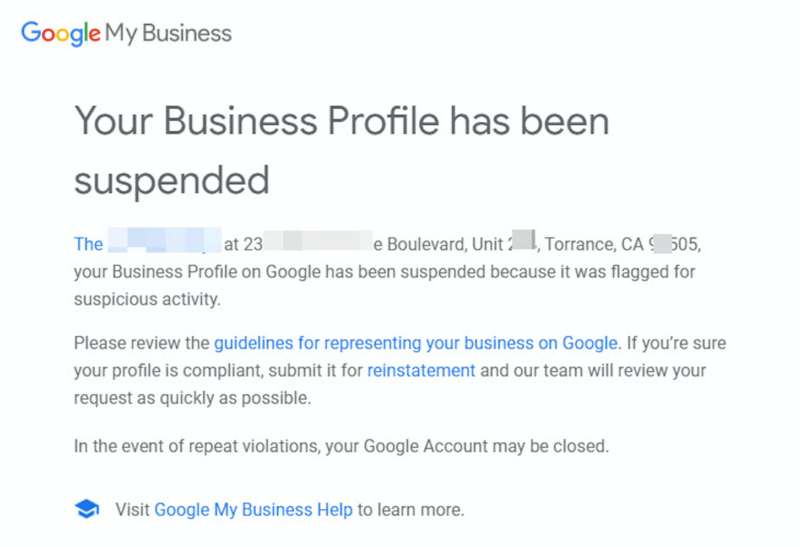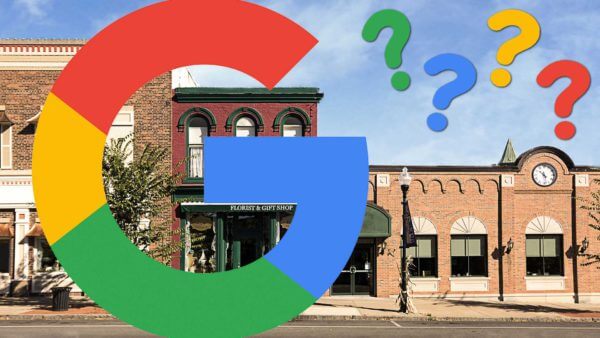Seen as a major step forward, the notice still won’t explain the reason for a Google My Business account suspension.
“Every day a listing is down, opportunity and revenue are lost,” says Ben Fisher, a Google My Business specialist and co-founder of local search consultancy Steady Demand, who first wrote about the change.
Delay before discovery. According to Fisher, “The suspension [usually] happened days before it was discovered.” In addition to a potential loss of calls, traffic or revenue, it often created “a feeling of betrayal when [business owners] would discover a suspension.”
Under the new law and policy, business owners will receive a formal notification in email. The email will indicate the listing has been suspended but won’t offer any explanatory detail, according to Fischer. It will identify the suspended location address. It will also link to guidelines for representing your business on Google and to the Google My Business reinstatement request form.
Example of new suspension notification

Hard and soft suspensions. There are two types of Google My Business listings suspensions. A “hard suspension” causes the business listing to be removed entirely from search and Google Maps. This is the most common suspension type, according to Fisher. The other, a “soft suspension,” leaves the listing online, but the account owner can’t manage it in any way: update hours, respond to reviews, create Google Posts and so on.
Fisher says the main reason Google declines to explain its rationale for suspensions is that “It would give way too much ammo to people who make fake listings and spam Google Maps.”
Stop, drop and roll. When a suspension occurs, Fisher advises business owners and local marketers to remain calm: “Stop, relax and read through the guidelines.” He also says it’s a good idea to have someone else look at the suspended listing before submitting a reinstatement form.
Many business owners reflexively submit the reinstatement request without thinking, he says. It’s also not uncommon for business owners to panic, remove the listing and create a new one. This is a terrible mistake, Fisher says, because it risks the loss of all the content (photos, videos, reviews) associated with that listing. But if the listing is successfully reinstated, all the content and its the listing’s ranking will typically return within 72 hours.
Name and address errors are the most common infractions. It’s also possible that the suspension was in error. “False positives happen all the time,” Fisher observes.
Why we care. Suspensions have been a source of considerable frustration for many local marketers and business owners, who’ve been in the dark about why their listings were dinged.
The new process is a major step forward, although it still won’t indicate “the why” behind the suspension. But the proactive notification will help businesses expedite reinstatement, which can have a material impact on small businesses. However, the specific listing information in the notification will be most valuable for multi-location brands with hundreds or thousands of locations.




